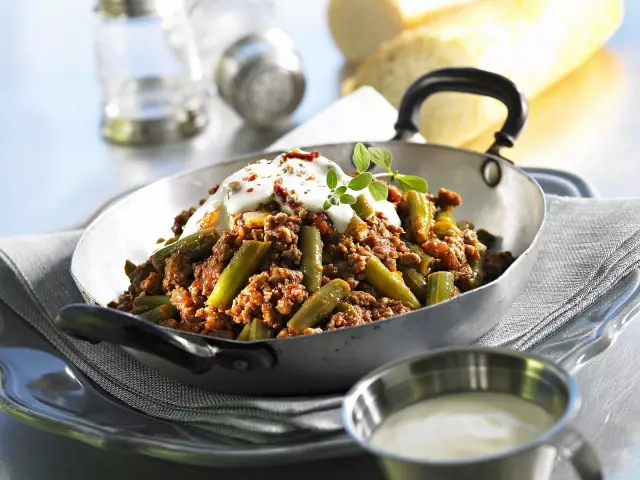2025 Author: Jasmine Walkman | [email protected]. Last modified: 2025-01-23 10:18
New varieties of beans that are resistant to heat and drought have been selected by scientists from Rome.
They have managed to create 30 new varieties that will grow well even at high temperatures caused by global warming worldwide, informs Reuters.
Beans, often called the meat of the poor, are a staple food for more than 400 million people in developing countries. However, due to the adverse effects of global warming, the areas where traditional varieties can be grown will be reduced by 50 percent by 2050.
And that could endanger the lives of tens of millions of people, scientists say.
Most of the small farmers in the world already live on the edge. Climate change will force them to choose whether to starve or simply refuse to cultivate the land and move to more urban areas.

For the selection of the new varieties, resistant to drought and high temperatures, crosses with not so popular varieties of beans were used, and not genetic engineering, the authors of the discovery emphasize.
In the process of searching for the most suitable varieties for crossbreeding, scientists have buried themselves in thousands of varieties of the plant, which are stored in genetic banks. They relied mainly on bean varieties that would grow well on poorer soil.
As a result of the crosses, they received bean varieties with increased iron content, which further increased their nutritional value.
The new heat-resistant bean varieties will be able to grow even if the average annual global temperature rises by 4 degrees, as expected by climatologists.
In this way, the loss of areas where beans can be grown will be reduced to only 5 percent.
Recommended:
Trans Fats Have Been Banned In The United States. And We Have?

The harm of trans fats has long been talked about. The constant attempts to prevent this problem from being made public have not been successful. The US Food and Drug Administration recently issued a statement that trans fats are not safe for health.
The Right Spices For Green Beans And Beans

There is hardly a more popular Bulgarian national dish than ripe beans, regardless of whether it is prepared as a soup, stew or in a casserole and whether it is lean or with meat. It is one of the most commonly used legumes in cooking, but unfortunately, if it is not prepared properly or with the wrong spices, the beans can quickly upset you.
Suitable Spices For Beans And Beans

The secret of the delicious dish lies not only in the duration of the tolin processing, but also in the spices and their quantity. You know that any dish cooked on low heat for a long time becomes extremely tasty. Often, however, the lack of a certain odor is felt, which can spoil the whole pleasure of eating.
Nutritional Values of Beans And Green Beans

With the name beans in our country the whole group is designated legumes , but when the name is used, it is always about beans and green beans . Ripe beans are the name of the seeds of the plant that are used for food, and green beans are understood as green seeds and green bean pods.
Tomatoes And Potatoes Have Become More Expensive, Salads Have Become Cheaper

There is a decrease in prices for eggs and fresh green salads after the Easter holidays, according to the State Commission on Commodity Exchanges and Markets. There are two objective reasons for this - on the one hand, most of the retail chains woke up with large unsold quantities of these products, which forced them to lower their prices so that they could sell them before their expiration date.

